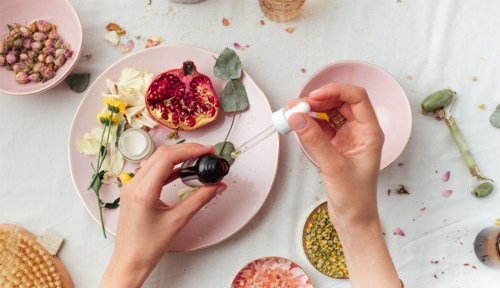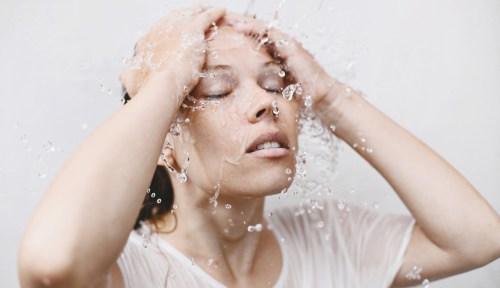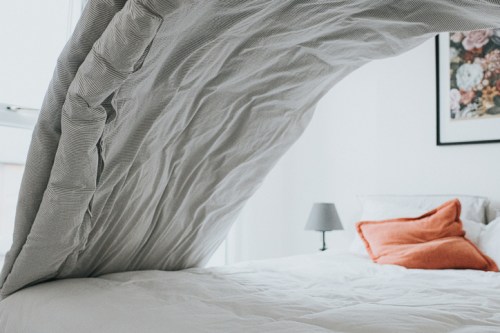Our editors independently select these products. Making a purchase through our links may earn Well+Good a commission
Whether it’s for the sake of stepping up your home fragrance game or lulling you off to sleep, you can use essential oils for a variety of reasons. And while there are *plenty* of scents out there, there are a few top picks that are must-haves in your arsenal. We tapped the experts to spill on the 10 best essential oils to add to your collection.
Experts in This Article
founder of S.W. Basics and author of Skin Cleanse
certified aromatherapist
certified aromatherapist
If you want to spice up your wellness routine, we compiled a list of essential oils you should know and use from Adina Grigore, S.W. Basics founder and author of Just the Essentials, and Stefanie Lendzian, founder and CEO of Naprim Naturals. They considered a number of factors: affordability, efficacy, potency, and range of applications. Pure versions of the oils pack a “real punch” because of the variety of ways they can be used. As Grigore puts it, “They don’t just smell good. They have the ability to make you feel really good, too.” Essential oils can be used to help alleviate headaches, help with congestion, and more.
What are essential oils?
“Essential oils are aromatic liquid substances that are extracted from different kinds of plant materials using the process of steam distillation,” says Amy Galper, aromatherapist and founder of the New York Institute of Aromatherapy. “What that means is that it takes a lot of plant material to yield a tiny amount of essential oils, so essential oils are highly concentrated and potent. They are made up of hundreds of different aromatic molecules, and when we inhale and smell them, they can have a profound effect on our emotions, psychology, and physical well-being.” Plus, they can also have a high impact when applied topically.
There are over 130 known essential oils in existence. And if you’ve ever wondered “Do essential oils work?” studies show that the answer is yes if you use them correctly with appropriate expectations. And though they’re natural and have tons of healing benefits, they should be used with caution.
“Although essential oils are natural compounds that come from plants, they are complex mixtures of chemical substances which are extremely potent,” says Lendzian. “Skin reactions are dose-dependent and vary according to the concentration of the oil applied. You should never apply undiluted oil to the skin. There are different dermal limits in essential oils for your face and for your body along with rinse-off products as opposed to leave-on products.”
The best ways to enjoy essential oil aromatherapy
Your safest bet? Save pure essential oils for your diffuser and you’ve got a first-row seat to experience their healing benefits and delicious scents. “My favorite essential oil accessories are all the pretty diffusers they look like home decor and hanging mood diffusers,” says Lendzian. Another great option is an essential oil stone. While pretty diffusers can make a statement in your space, hanging mood diffusers (which are like supped-up car air fresheners) and oil stones (which just require placing a few drops on a small, porous stone) are more inconspicuous.
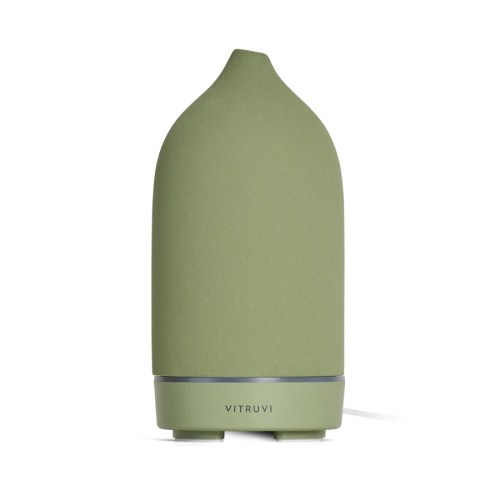
Vitruvi Stone Essential Oil Diffuser — $123.00
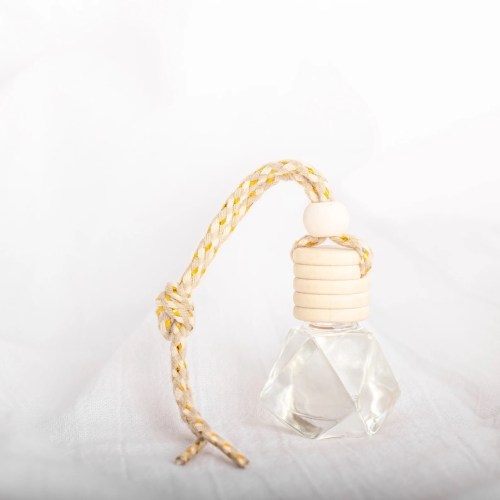
Hanging Prism Mood Diffuser — $14.00
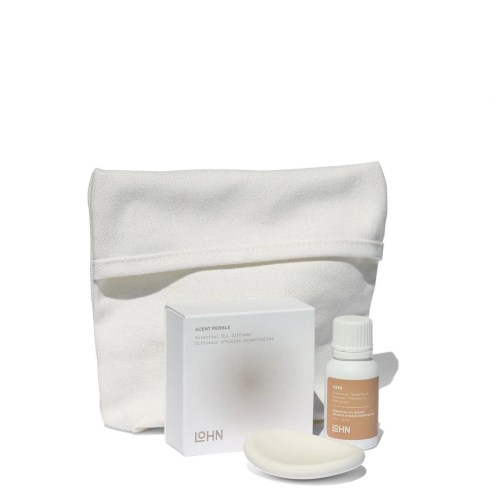
Lohn Pebble and Oil Set — $38.00
The diffuser and the oil stone also make it easy to mix different scents at home. “If you like the scent of eucalyptus, you can combine it with rosemary to make your space smell like a forest,” says Grigore. And if you’re looking for more essential oil blend ideas, Lendzian adds that her favorite essential oils to mix are vanilla and orange, with a little bit of lavender and bergamot. “This gives you a citrus scent, but not too sweet,” she says. “It has a calming effect and can help soothe the skin at the same time. It’s a winning combination overall!” Have fun and get creative, pairing oils you like based on their benefits, their scents, or both. If you want to apply the oils topically, grab pre-made beauty products that include the ingredients that interest you.
“There are several popular essential oils worth considering—each is beneficial in its own right, just depending on what you are hoping to gain by using an essential oil as part of your personal care routine,” says Lendzian, who is also a recent graduate of the Formula Botanica Organic Formulation School. Learn all about aromatherapy and essential oils benefits by perusing the list of essential oils below.
The Best List of Essential Oils
1. Lemon oil
“Lemon oil is commonly used in the kinds of commercially available products you encounter every day,” says Grigore. “If you walk down the aisles of any grocery store, you’ll find everything from household cleaners to hand soap to flavored sparkling water with the essence of lemon. As is the case with many citrus oils, the scent closely mimics that of the fruit from which it’s derived: bright, light, zesty, and clean.”
It’s a scent universally identified with freshness and cleanliness because is a powerful antibacterial, astringent, and antiseptic agent. That’s why Lendizan says it’s also used to fight bacterial and fungal infections.
“Diluted lemon oil can be wonderfully effective when it comes to skin care because of its high concentration of D-limonene, a compound that assists in diminishing the appearance of wrinkles, promoting circulation, and toning the skin,” says Grigore. “In fact, recent research showed that D-limonene has skin-repairing and anti-inflammatory properties.”
“Plus, the scent of lemon oil has a powerful effect on mood,” says Grigore. A small 2006 study found that lemon oil vapor has antidepressant qualities and another 2008 found that the scent of lemon oil boosted participants’ moods, a finding confirmed through self-reported data and empirical data, as elevated levels of the anti-stress hormone norepinephrine were measured in their blood.
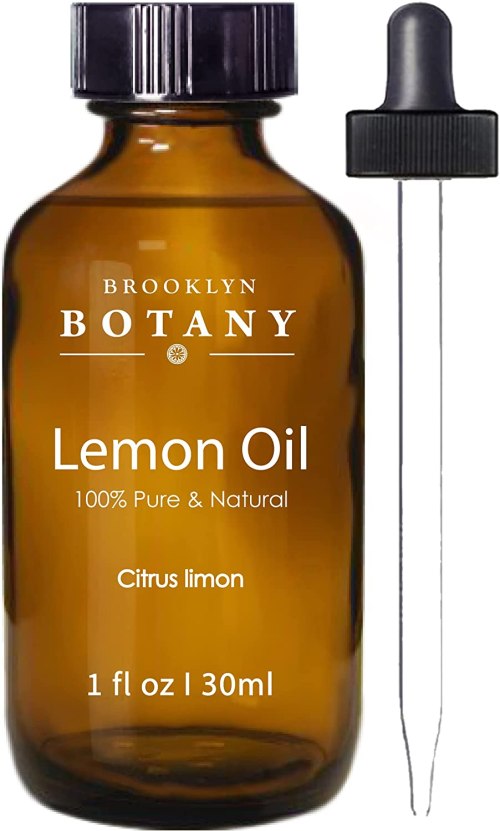
Brooklyn Botany Lemon Oil — $7.00

Burt's Bees Body Oil Lemon & Vitamin E — $10.00
2. Cinnamon oil
Cinnamon oil is the opposite of lemon oil. Grigore calls it sweet, spicy, musky, and warm. “For me, cinnamon conjures up a distinct mixture of sexy exoticness and cozy familiarity,” says Grigore. “Derived from both the bark and leaf of the Cinnamomum verum tree, it’s actually one of history’s oldest essential oils, with the Egyptians recording their extensive use of it in Ebers Papyrus, a medical text dating to approximately 1550 B.C.”
During that time, cinnamon was a hot commodity. “Cinnamon oil was affordable only for the very wealthy—emperors, royals, and, later on, Europe’s elite,” says Grigore. “Fortunately for us, price and access to this super-useful oil are no obstacle today.”
When applied topically, cinnamon skin-care products can soothe muscle aches and pains, and also has antiseptic, antibacterial, antimicrobial, anti-inflammatory, and pain-relieving properties, found a 2020 review article. “Some studies have shown that cinnamon oil contains powerful antioxidants and could potentially be useful in fighting neurological disorders and heart disease,” says Grigore.

Aura Cacia Organic Cinnamon Leaf Pure Essential Oil — $6.00
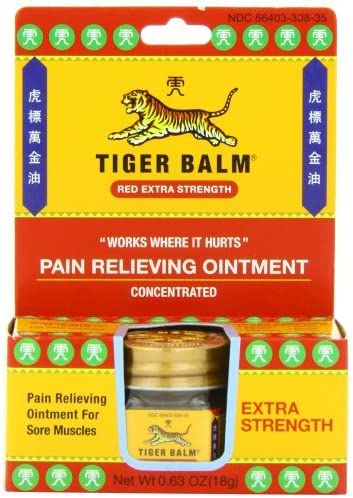
Tiger Balm Pain Relieving Ointment, Extra Strength, Cinnamon — $5.00
3. Lemongrass oil
“Lemongrass is a fast-growing, tropical grass native to Sri Lanka and south India and is now cultivated in warm climates in Africa and Asia,” says Grigore. “The entire plant is utilized in everything from tea to cleaning products, and it has been used for years in Indian healing traditions to treat maladies like gastrointestinal issues and fever.”
It has a mild, sweet, lemony, herbal aroma. “I like to use it for its cheerful, energetic scent alone, but there also happens to be plenty of evidence that it possesses powerful medicinal and pharmacological properties,” says Grigore. “Research also shows that lemongrass essential oil is antibacterial and anti-fungal, antimicrobial, anti-inflammatory, and can be a potent insect repellent. Its antifungal properties are especially helpful in combating the nasty yeast associated with dandruff. One study noted that participants who used a dandruff tonic with a 10 percent concentration of lemongrass oil saw a significant reduction in dandruff in as little as a week.”
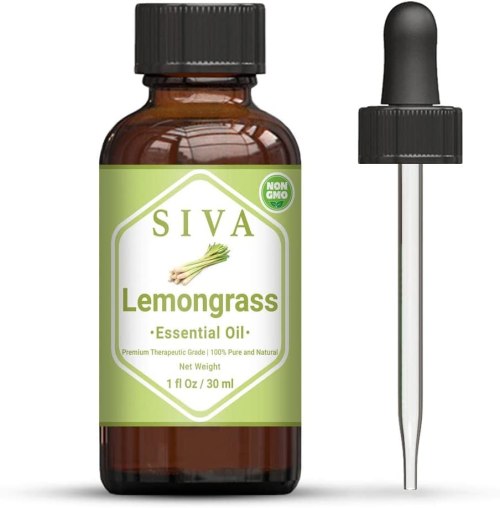
Siva Lemongrass Essential Oil — $8.00
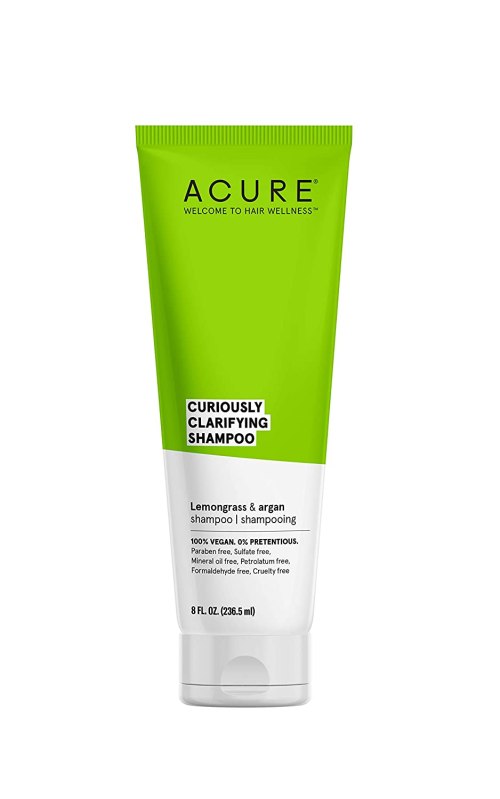
Acure Curiously Clarifying Shampoo, Lemongrass and Argan — $10.00
5. Lavender oil
Of all the essential oils out there, Lendzian says lavender is by far the most powerful. “It is one of the most popular and versatile essential oils used,” says Lendizan. “It promotes relaxation and helps reduce stress and anxiety. Due to its powerful antioxidant and anti-inflammatory properties, it fights fungal infections, allergies, and eczema and is wound healing. It has so many uses due to its powerful properties.”
Grigore says that what we call lavender is actually called Lavandula angustifolia and is one of 39 different types of lavender. “Different species have different properties, but all types contain large proportions of linalool, linalyl acetate, eucalyptol, and camphor,” she says. “That’s a lot of components to have in high quantities, and it’s the reason it’s such a powerhouse essential oil. Lavender is sedative, antispasmodic, anti-anxiety, anti-inflammatory, antimicrobial, antioxidant, antibacterial, anesthetic, immune-boosting, and antiviral.”
Premade lavender skin care is your best bet for using the oil topically because it has a high content of linalool, which can be sensitizing for some people. If you do want to DIY a formula, Grigore says to dilute no more than six drops of it in a carrier oil (like jojoba oil or almond oil) before application. “As with all essential oils, and ingredients in general, be sure to try a small amount on your skin,” she says, “and watch for a reaction. If your skin loves lavender, you can use up to a 50-50 mix of half lavender oil, half carrier oil in your DIY products. I use lavender in a million different ways, all day, every day.”

Majestic Pure Lavender Essential Oil — $17.00
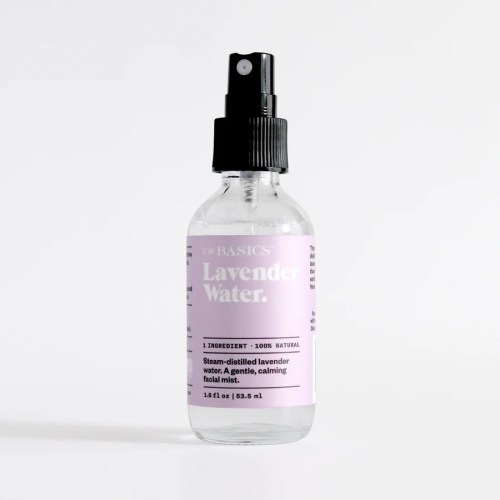
SW Basics Lavender Water — $13.00
5. Clary sage
Clary sage is native to the northern Mediterranean region and North Africa. “Its essential oil is derived via the steam distillation of the plant’s flowering tops and leaves,” says Grigore. “Although the ancient Egyptians used it in medicinal practices, it wasn’t until medieval times that clary sage really took off. During this time, doctors and herbalists used clary sage seeds to help treat vision problems.” Plus, Grigore says it was also used to flavor wine.
When applied topically, it has a ton of benefits. “It’s antibacterial, astringent, antiseptic, and can help improve circulation,” says Grigore. It has also been lauded for antidepressant and hormone-regulatory effects. “A 2014 study of 22 postmenopausal women in their 50s—some of whom were depressed—showed that breathing diffused clary sage helped to alleviate participants’ depression by lowering cortisol levels and improving thyroid hormone levels. And a 2012 study revealed that clary sage—along with lavender and marjoram—makes an effective massage treatment for alleviating menstrual pain and cramping.”
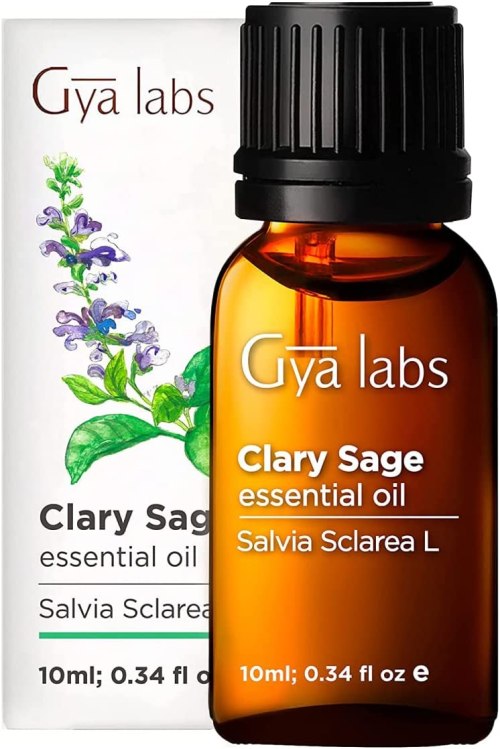
Gya Labs Clary Sage Essential Oil — $10.00
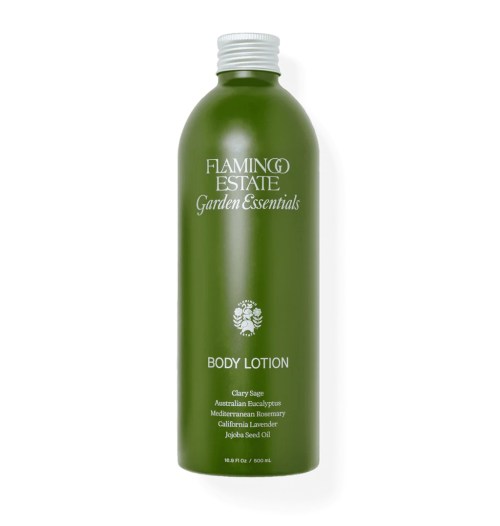
Flamingo Estate Clary Sage & Ionian Bergamot Body Lotion — $70.00
6. Tea tree oil
“Tea tree oil is a must-have in the medicine cabinet,” says Lendizan. “Tea tree oil is well known for its anti-inflammatory properties that help fight allergies and infections. It can also help your scalp and fight off dandruff” and soothe itching.
Grigore adds that the only place that tea trees grow naturally is in Australia, but they grow super abundantly there. “Traditionally, native Australian cultures used tea tree leaves to treat coughs and colds, heal wounds, and alleviate sore throats and skin ailments,” she says. “I put tea tree oil in virtually all of my DIY products; I recommend diluting to a 5 percent concentration, which is about 14 drops per tablespoon of carrier oil. One of my favorite ways to use it is to add a couple of drops to my store-bought mouthwash.”
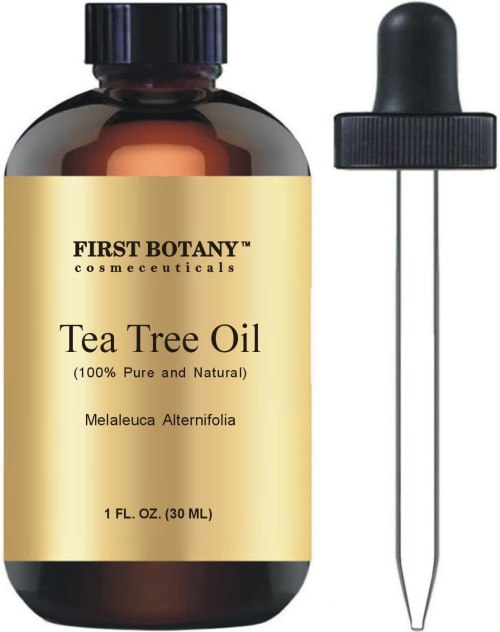
First Botany Tea Tree Essential Oil — $9.00

Soapbox Soothing Tea Tree Scalp Treatment — $10.00
7. Eucalyptus
“Eucalyptus essential oil is definitely not for the weak,” says Grigore. That’s because it has a strong, slightly minty scent. “It will clear your airways super quick and can take your breath away.” Lendizan adds that it’s an “anti-inflammatory antioxidant, and has anti-microbial properties that help fight allergies, and provide relief from headaches and muscle strain.”
And as much as we love it, bugs hate it. “It works as a pesticide and has the ability to kill fungus, bacteria, insects, mites, and weeds,” says Grigore. And because it acts as a repellant against mosquitos, it can help prevent malaria cases. “It’s possible this is why eucalyptus trees were first planted in California in the 1850s. They were an invasive species from Australia but the government was worried about the spread of malaria.”
Grigore likes to put pure eucalyptus oil in her home. “The scent is a little strong, but it really freshens up a room and makes the air feel clean,” she says. “It also makes a great pantry and closet moth and bug repellent.” Bonus: Lendizan says “it’s wonderful to use in the shower as the heat and steam can really help energize your senses, too.”
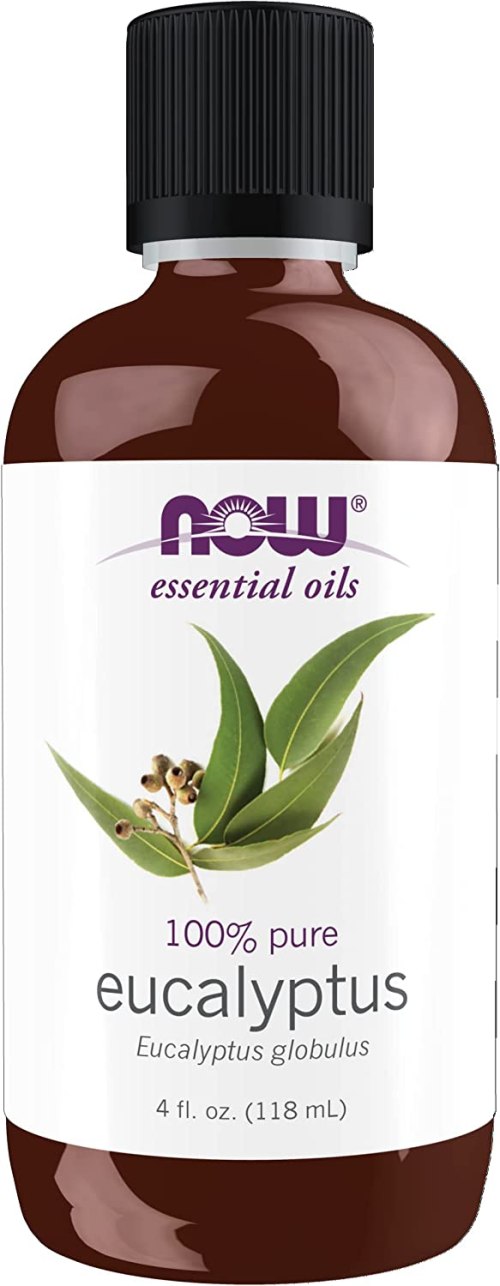
Now Essential Oils, Eucalyptus Oil — $14.00
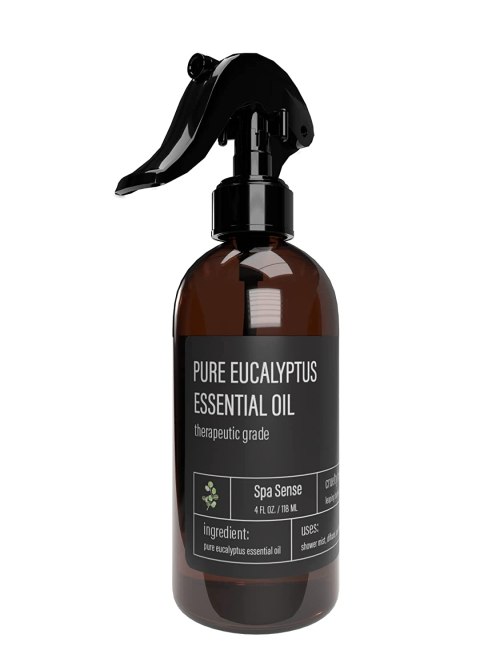
Spa Sense Pure Eucalyptus Oil Shower Mist — $16.00
8. Rosemary oil
“Rosemary oil is a stimulant. When inhaled, the aroma of rosemary has been shown to increase heart rate, blood pressure, and respiratory rate and boost your immune system,” says Grigore. “It has also been shown to increase brain wave activity and aid the part of your nervous system that controls organ function. But while it stimulates many bodily systems, it also decreases levels of the stress hormone cortisol. And it does all of this while airborne, so you can simply diffuse it and gain these health benefits.”
And when applied topically, it’s a vasodilator (aka it makes blood vessels expand), which is why it’s often used to promote hair growth, adds certified aromatherapist Caroline Schroeder.
“Rosemary is a great choice for hair growth and hair thickness because the essential oil can repair, stimulate, and regulate cells. That means it can help to reduce or balance oily discharge at the hair follicles,” Schroeder says. That’s why you’ll often see it in scalp serums and shampoos. Plus, its antimicrobial properties also make it a great addition to natural beauty products to help extend their shelf life.
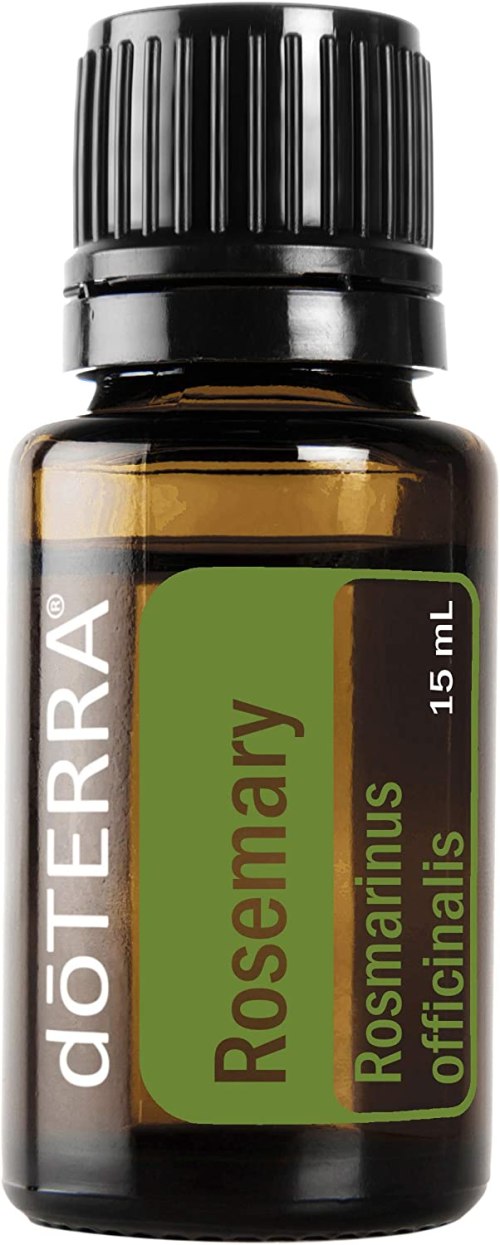
doTERRA Rosemary Essential Oil — $27.00
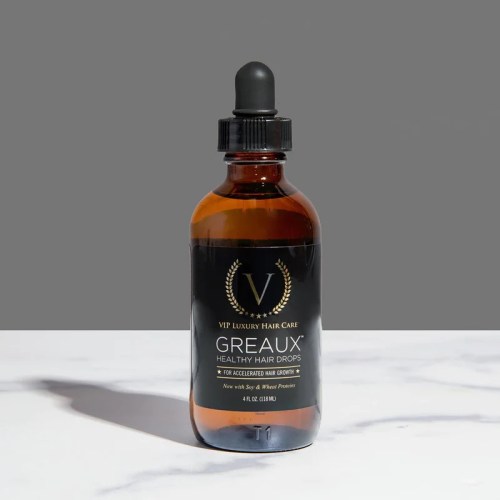
VIP Luxury Hair Care Greaux Healthy Hair Drops — $30.00
9. Sweet orange oil
Having been born and raised in south Florida, Grigore loves the smell of sweet orange essential oil. “I think it is the best-smelling essential oil, period,” she says. “It makes me happy and energized from one whiff.” While that is in part due to the sentimental connection to her past, sweet orange oil has a proven relaxing impact. “In studies, it reduced anxiety when it was inhaled, and when applied topically, it slowed down participants’ pulse rates and breathing rates, while they also reported feeling more cheerful and vigorous.”
Despite its benefits, sweet orange oil can be difficult to incorporate into your routine. “It doesn’t diffuse well, and, like lemon oil, it can make your skin photosensitive when applied topically, so I recommend using it in products you plan on rinsing off in the shower,” says Grigore. And keep in mind that sweet orange oil and bitter orange are very different.
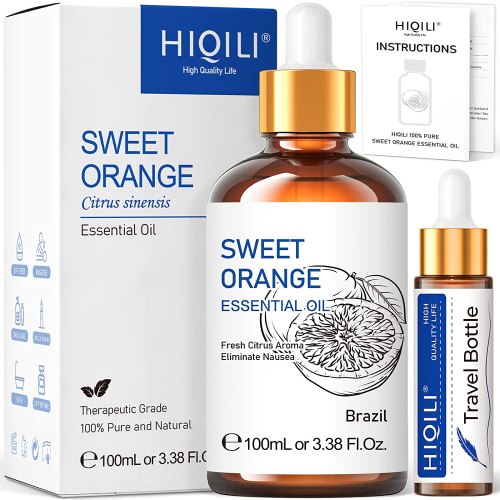
Hiqili Orange Essential Oil — $10.00

The Honest Co. Perfectly Gentle Sweet Orange Vanilla Shampoo and Body Wash — $14.00
10. Peppermint oil
“You know what peppermint smells like. It’s already in your medicine cabinet, mixed into your toothpaste or mouthwash or shampoo,” says Grigore. “But what you probably don’t know is why peppermint is in all of these products. Peppermint oil is made up mostly of menthol and menthone. It is a stimulant, antispasmodic, antiviral, antimicrobial, antifungal, and antioxidant.”
Because it creates a cooling sensation on the skin, it’s also an effective treatment for tension headaches: Participants in one study reported a significant reduction in the pain of their tension headaches within 15 minutes, and the pain continued to drop for the following hour. “It also helps soothe nausea, improves concentration and memory, and is an analgesic, which means it numbs and kills pain on the skin,” she says.
Grigore’s favorite way to use peppermint oil is in lip products. “It’s incredibly invigorating, and having it literally right under your nose makes you feel refreshed all day,” she says.
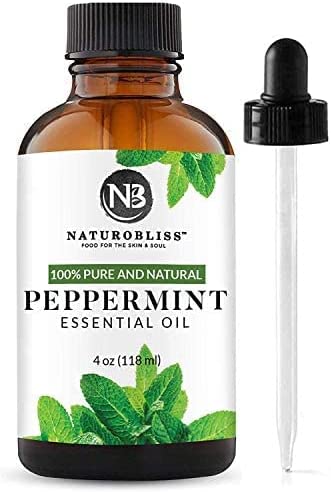
NaturoBliss Peppermint Essential Oil — $12.00

Mario Badescu Mint Lip Balm — $8.00
Sign Up for Our Daily Newsletter
Get all the latest in wellness, trends, food, fitness, beauty, and more delivered right to your inbox.
Got it, you've been added to our email list.
